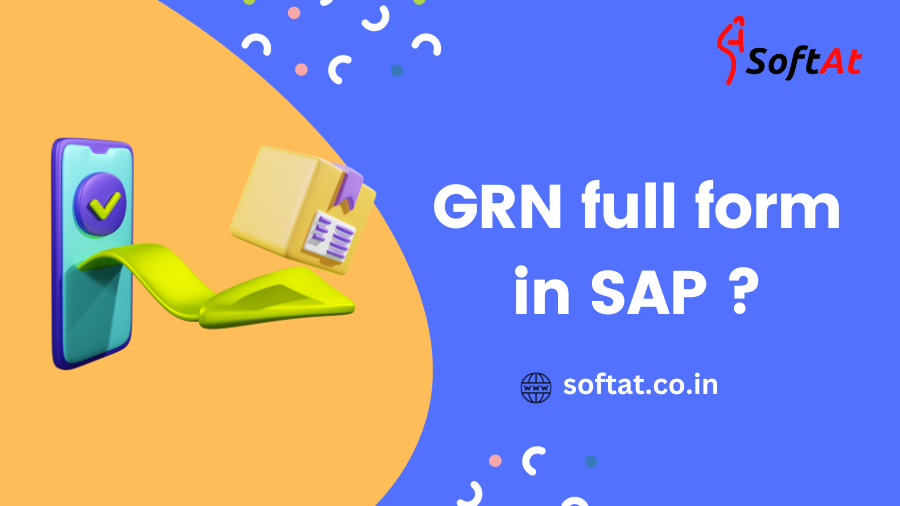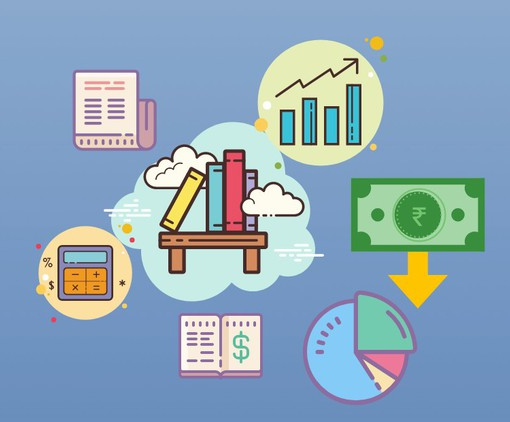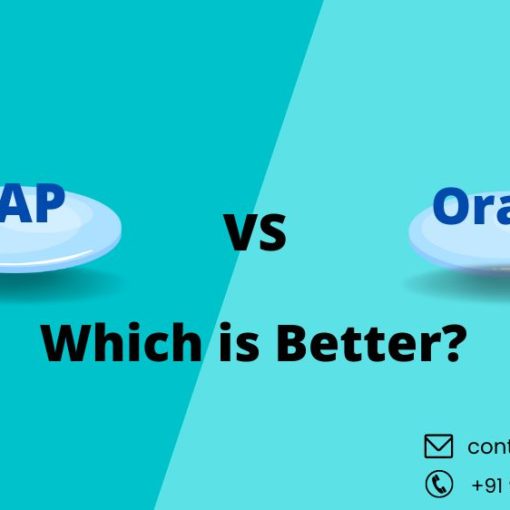GRN Full Form in SAP
GRN full form in SAP. GRN stands for Goods Received Note. It is a document that is issued by a customer to a supplier to acknowledge the receipt of goods or services. GRNs are an important part of the procurement process and play a key role in accounts payable.
GRNs in SAP

In SAP, GRNs are created using the MIGO transaction. MIGO is a material document that can be used to record a variety of goods movements, including GRNs.
When creating a GRN in MIGO, you must specify the following information:
- Purchase order number
- Vendor
- Material
- Quantity received
- Storage location
- Movement type
You can also specify additional information, such as:
- Batch
- Serial number
- Movement reason
- Special stock indicator
Once you have created the GRN, you must post it to update the inventory records and accounts payable. To post a GRN, you can use the MIGO transaction or the MB12 transaction. GRN full form in SAP.
Benefits of using GRNs in SAP
There are several benefits to using GRNs in SAP, including:
- Improved accuracy: GRNs help to ensure that the inventory records are accurate and up-to-date. This can help to prevent stockouts and overstocking.
- Reduced costs: GRNs can help to reduce costs by streamlining the procurement process and improving efficiency.
- Enhanced visibility: GRNs can help to improve visibility into the procurement process and inventory levels. This can help to identify and address potential problems early on.
How to use GRNs in SAP
To use GRNs in SAP, you must first create a purchase order. Once the purchase order has been created, you can create a GRN in MIGO to acknowledge the receipt of the goods or services.
When creating a GRN, you must specify the purchase order number, vendor, material, quantity received, storage location, and movement type. You can also specify additional information, such as batch, serial number, movement reason, and special stock indicator.
Once you have created the GRN, you must post it to update the inventory records and accounts payable. To post a GRN, you can use the MIGO transaction or the MB12 transaction.
In addition to the benefits mentioned above, GRNs in SAP can also help to:
- Improve compliance with regulations: GRNs can help to ensure that the company is complying with regulations related to inventory and accounts payable.
- Reduce fraud: GRNs can help to reduce fraud by providing a documented record of the receipt of goods or services.
- Improve supplier relationships: GRNs can help to improve supplier relationships by providing suppliers with timely and accurate feedback on their deliveries. GRN full form in SAP.
Use of GRNs in SAP, companies can consider the following:
- Use GRNs for all goods receipts: GRNs should be used for all goods receipts, regardless of the value or quantity of the goods. This will help to ensure that the inventory records are accurate and up-to-date.
- Use GRNs to automate the procurement process: GRNs can be used to automate the procurement process by integrating them with other SAP modules, such as Materials Management (MM) and Purchasing (MM-PUR). This can help to streamline the procurement process and improve efficiency.
- Use GRNs to improve reporting: GRNs can be used to generate a variety of reports, such as inventory turnover reports and supplier performance reports. These reports can help companies to identify areas for improvement.
Here are some specific examples of how companies can extend the use of GRNs in SAP:
- A manufacturing company can use GRNs to track the receipt of raw materials and finished goods. This can help the company to ensure that it has the necessary materials to meet production demand and that the finished goods are ready to be shipped to customers on time.
- A retail company can use GRNs to track the receipt of merchandise from suppliers. This can help the company to ensure that the merchandise is available in stores when customers demand it.
- A wholesale distributor can use GRNs to track the receipt of goods from suppliers and the shipment of goods to customers. This can help the company to ensure that it is meeting its customer commitments and that its inventory levels are accurate.
By the use of GRNs in SAP, companies can improve accuracy, reduce costs, enhance visibility, improve compliance, reduce fraud, and improve supplier relationships.
GRN-based inventory management
GRN-based inventory management is a process of managing inventory using GRNs as the primary source of data. In GRN-based inventory management, all goods receipts are recorded using GRNs. This data is then used to update the inventory records and to generate reports on inventory levels and movements.
GRN-based inventory management has a number of advantages over traditional inventory management methods, including:
- Improved accuracy: GRN-based inventory management helps to ensure that the inventory records are accurate and up-to-date. This is because GRNs are created at the time of goods receipt, which minimizes the risk of errors.
- Reduced costs: GRN-based inventory management can help to reduce costs by streamlining the inventory management process and improving efficiency. For example, GRNs can be used to automate the generation of inventory reports and to identify slow-moving and obsolete items.
- Enhanced visibility: GRN-based inventory management provides enhanced visibility into inventory levels and movements. This can help companies to identify and address potential problems early on. For example, GRNs can be used to identify stockouts and overstocking.
GRN and supplier relationship management (SRM)
GRNs can also be used to improve supplier relationship management (SRM). SRM is the process of managing the relationships between a company and its suppliers. GRNs can be used to provide suppliers with timely and accurate feedback on their deliveries. This feedback can help suppliers to improve their performance and meet the company’s expectations.
For example, GRNs can be used to track the on-time delivery rate and the quality of deliveries. This information can then be shared with suppliers to help them improve their performance.
GRN and logistics
GRNs can also be used to improve logistics operations. Logistics is the process of moving goods from one location to another. GRNs can be used to track the movement of goods through the supply chain. This information can then be used to optimize the logistics process and improve efficiency.
For example, GRNs can be used to track the location of goods in transit and to identify potential delays. This information can then be used to take corrective action and ensure that goods are delivered on time.
Use Cases for GRNs in SAP:
1. Inventory Valuation: GRNs can be used to accurately value inventory by providing details on the cost of goods received. This information is crucial for financial reporting and inventory management.
2. Production Planning: GRNs can be integrated with production planning systems to ensure timely availability of raw materials for production schedules. This helps in optimizing production processes and avoiding production delays.
3. Supplier Performance Evaluation: GRNs can be used to track supplier performance metrics, such as on-time delivery, quality of goods, and adherence to specifications. This data can be used to evaluate and improve supplier relationships.
4. Warehouse Management: GRNs can be integrated with warehouse management systems to optimize storage allocation and material handling processes. This enhances warehouse efficiency and reduces logistical bottlenecks.
5. Supply Chain Visibility: GRNs provide real-time insights into the movement of goods throughout the supply chain, enabling better visibility and proactive decision-making. This helps in identifying potential disruptions and mitigating supply chain risks.
In conclusion, GRNs are a valuable tool in SAP that can be leveraged to enhance various aspects of procurement, inventory management, and supply chain operations. By effectively utilizing GRNs, organizations can achieve greater accuracy, efficiency, and visibility, leading to improved financial performance and stronger supplier relationships.
Conclusion
GRNs are an important part of the procurement process and play a key role in accounts payable. By using GRNs in SAP, you can improve accuracy, reduce costs, and enhance visibility.
You may be interested in:
SAP Full Form & Definition of SAP ERP Software





